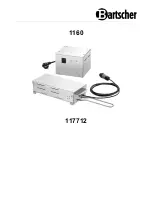
3.5
Bends
90 degree elbows may be used for making turns in the 3/4" CPVC sample pipe network. The total number of 90
degree elbows in a single pipe run must be kept to 10 or less to maintain acceptable system performance.
Figure 3-2: 90° elbow bend
3.6
Capillary Tubes
For above ceiling or concealed open area applications, capillary tube air sampling can be used.
Note:
The maximum allowable length for a capillary tube is 10 feet.
B
A
C
E
F
D
G
Legend
A
Pipe Tee
B
Sampling Pipe
C
Capillary Tube
D
Capillary Tube Connector
E
Ceiling Tile
F
Sampling Point
G
Label
Figure 3-3: Capillary Tube
3.7
Exhaust
Where the VPR-SD1 is located outside the protected area, consideration must be given to returning the exhaust air
to the protected environment to balance pressure differences that may exist between the two areas. In the majority
of applications, this is not necessary as pressure differences are minimal.
Examples of where the exhaust should be returned to the protected area include:
l
where pressure differences exceed 50 Pa from where the detector is located outside the protected area.
l
where there are hazardous substances inside the protected area, for example hospital operating theatres,
laboratories.
Pipe of the same specification as the sampling pipe runs should be used and its length limited to a maximum of 30 ft
(10 m) to avoid significant reduction in the airflow. Care should be taken to position the new exhaust outlet where it
cannot be accidentally or deliberately blocked.
Return air pipes need to be as short as possible to minimize the effect of airflow resistance in the return air pipe
network.
Hochiki America Corporation
FireNET Vapor VPR-SD1 Product Guide
www.hochiki.com
15
Содержание FireNET Vapor VPR-SD1
Страница 1: ...FireNET Vapor VPR SD1 Product Guide October 2012 Document 21537_00 Part Number HA 06 335...
Страница 2: ......
















































